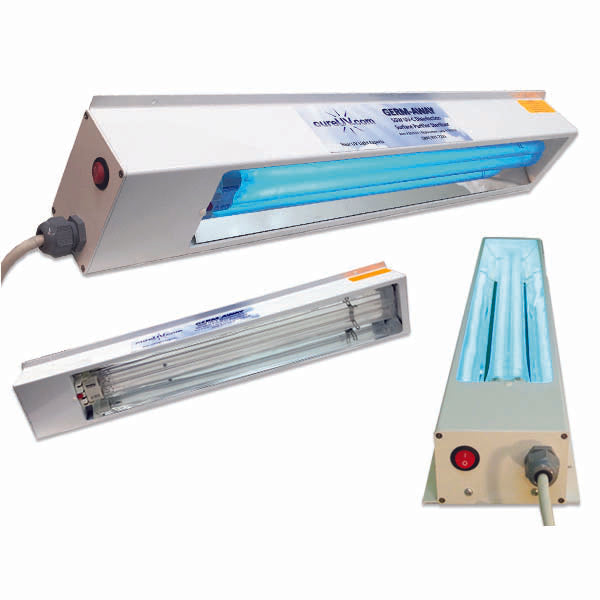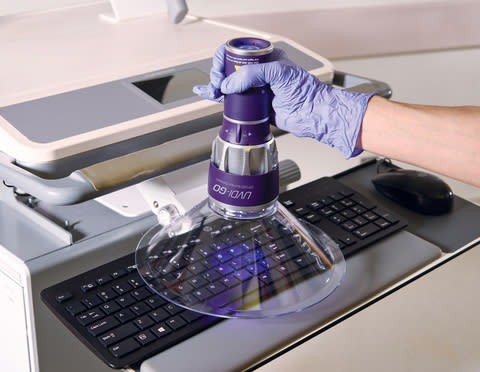Introducing the Power of Far-UVC in UV Sanitizers: Next-Level Protection for Your Space
Introducing the Power of Far-UVC in UV Sanitizers: Next-Level Protection for Your Space
Blog Article
Far UVC Light: A Game-Changer in the Battle Versus Airborne Pathogens
In the ever-evolving fight against airborne virus, the emergence of far UVC light has actually sparked significant passion and potential. What precisely is much UVC light, and how does it work?
The Scientific Research Behind Far UVC Light
The clinical principles underlying using Much UVC light as a possible solution for combating airborne microorganisms are both appealing and complex. Much UVC light refers to a details series of ultraviolet (UV) light wavelengths, generally between 207 and 222 nanometers, which have been found to efficiently eliminate or inactivate bacteria such as viruses and microorganisms. Unlike conventional UVC light, which has a shorter wavelength and is known for its germicidal homes however can also harm human skin and eyes, Far UVC light has actually been revealed to be secure for human exposure.
The crucial device behind the effectiveness of Far UVC light hinge on its capability to pass through and damage the hereditary material of microorganisms, including their DNA and RNA. When exposed to Far UVC light, the genetic product undergoes a process called photodimerization, where adjacent bases in the DNA or RNA particle bind together, stopping duplication and rendering the microorganism not able to cause or recreate infection.

How Much UVC Light Functions
Much UVC light operates by making use of specific ultraviolet wavelengths to successfully reduce the effects of microorganisms and stop their replication, making it an appealing option for combating air-borne microorganisms. Unlike conventional UVC light, which is harmful to human skin and eyes, much UVC light has shorter wavelengths, commonly in the series of 207 to 222 nanometers (nm), that do not permeate the outer layer of the skin or the tear layer of the eye. This makes it safe for continuous human exposure, while still being deadly to infections and germs.
The effectiveness of far UVC light lies in its capacity to damage the dna and pass through and RNA of bacteria. When revealed to much UVC light, the genetic material of these virus is harmed, making them not able to duplicate and contaminate cells. Furthermore, studies have shown that far UVC light can effectively inactivate air-borne viruses, such as influenza, measles, and coronaviruses, including SARS-CoV-2, the virus in charge of COVID-19.
Furthermore, far UVC light is also efficient in sanitizing surface areas and objects in an encased space. By installing much UVC lights or making use of mobile much UVC light devices, it is feasible to continuously decontaminate the air and surfaces, decreasing the threat of airborne transmission of microorganisms.
Advantages of Far UVC Light
Making use of far UVC light deals a range of considerable advantages in combating air-borne virus and guaranteeing a safer atmosphere for continuous human direct exposure. One of the vital benefits of far UVC light is its capacity to properly reduce the effects of various types of hazardous bacteria, infections, and fungis without creating injury to human beings. Unlike conventional UV light, which can be harmful to human skin and eyes, far UVC light has a shorter wavelength that permits it to target and ruin microorganisms while presenting very little danger to human health and wellness.

Moreover, much UVC light is much safer for the environment contrasted to standard sanitation methods. Chemical anti-bacterials typically include damaging ingredients that can have adverse influence on the atmosphere. Far UVC light, on the various other hand, does not produce any type of hazardous byproducts or deposits, making it a much more lasting and environment-friendly remedy.
Applications of Far UVC Light
One of the vital usages for much UVC light is in the area of air filtration and disinfection. Much UVC light has actually shown to be effective in eliminating air-borne virus such as viruses, bacteria, and fungi. This modern technology functions by sending out a particular wavelength of light that can penetrating the outer layers of microbes and damaging their DNA, rendering them unable and inactive to duplicate. Unlike traditional UV light, much UVC light is secure for human direct exposure, making it ideal for continuous use in public rooms such as workplaces, hospitals, and schools.
One more application of far UVC light remains in the healthcare sector. It can be made use of to disinfect hospital spaces, operating cinemas, and medical tools, minimizing the danger of healthcare-associated infections. In addition, much UVC light can be incorporated into a/c systems to cleanse the air flowing in structures, offering an added layer of defense against air-borne microorganisms.
Moreover, much UVC light can be used in the food industry to protect against foodborne diseases. It can be used to disinfect food processing facilities, eliminating bacteria and various other microorganisms that may contaminate food.
Future Implications of Far UVC Light
The prospective future applications of far UVC light are vast and hold promise for numerous markets and fields. Hospitals and clinics might utilize far UVC light to sanitize patient spaces, operating cinemas, and waiting areas, lowering the danger of healthcare-associated infections.
Furthermore, making use of far UVC light in public rooms such as flight terminals, train stations, and mall might help manage the spread of airborne pathogens. By continuously disinfecting these locations, the threat of transmission her response might be substantially lowered, offering a much safer environment for people.
Another potential application of far UVC light remains in the food sector. Far UVC light could be used to decontaminate food prep work surface areas, product packaging products, and storage locations. This might aid prevent the contamination of food and reduce the incident of foodborne ailments.
Additionally, far UVC light might be used in heating and cooling systems to decontaminate the air distributing in structures. This can be especially useful in congested areas such as workplaces, institutions, and cinemas, where the danger of air-borne look at this site transmission is greater.
Conclusion
To conclude, much UVC light has arised as a game-changer in the fight versus airborne virus. Its unique residential or commercial properties and capability to securely eliminate microorganisms and infections make it a promising solution for various applications. From public spaces to health care settings, far UVC light offers many advantages in minimizing the transmission of conditions. With more r & d, its prevalent execution can have substantial effects for the future of infection control.
Much UVC light refers to a certain variety of ultraviolet (UV) light wavelengths, usually between 207 and 222 nanometers, which have been found to effectively eliminate or suspend bacteria such as infections and germs. far-uvc. Unlike conventional UVC light, which has a much shorter wavelength and is great post to read recognized for its germicidal residential properties however can also damage human skin and eyes, Far UVC light has actually been shown to be secure for human direct exposure
Unlike traditional UVC light, which is hazardous to human skin and eyes, much UVC light has much shorter wavelengths, generally in the range of 207 to 222 nanometers (nm), that do not pass through the outer layer of the skin or the tear layer of the eye. Unlike traditional UV light, which can be hazardous to human skin and eyes, much UVC light has a much shorter wavelength that enables it to target and damage microorganisms while posturing marginal danger to human wellness.
Unlike standard UV light, far UVC light is risk-free for human exposure, making it ideal for constant use in public spaces such as schools, hospitals, and offices.
Report this page